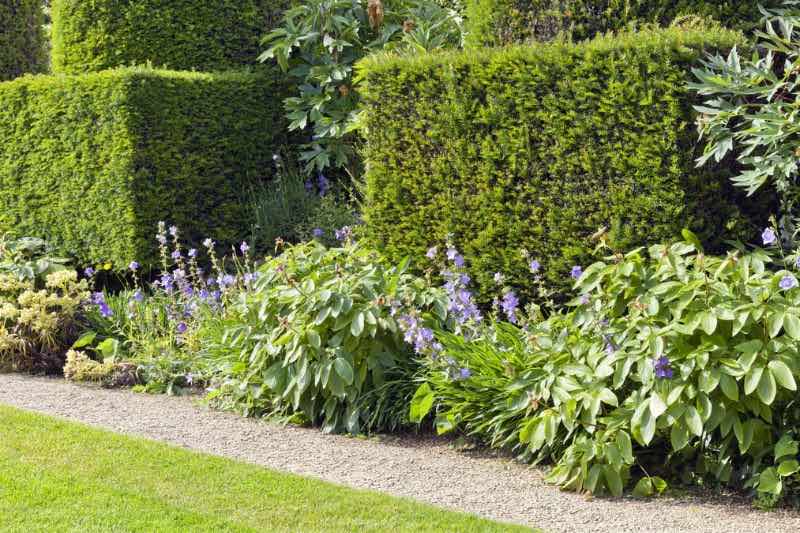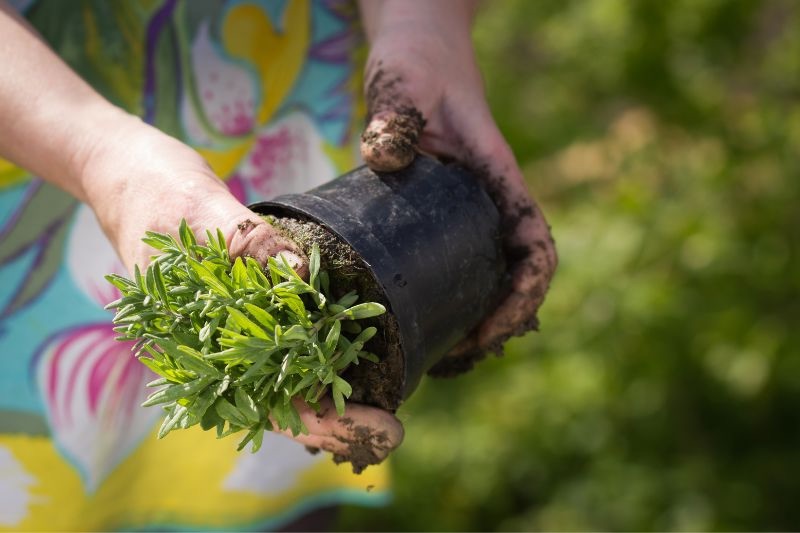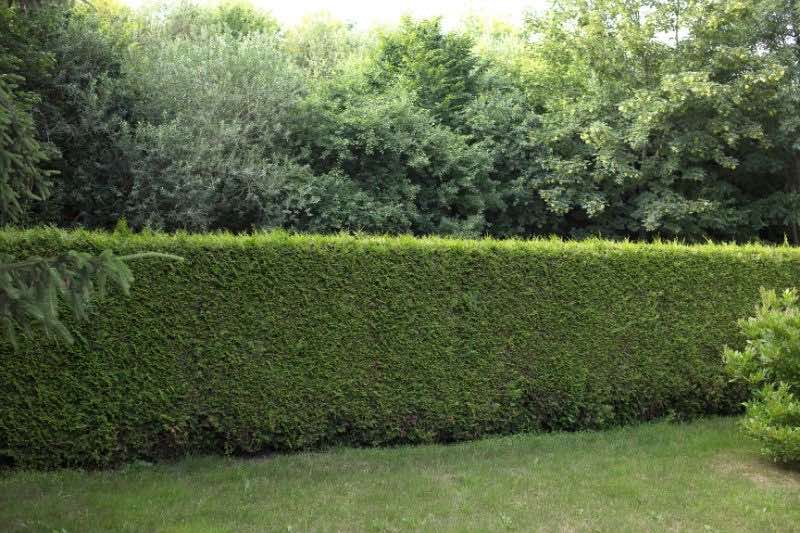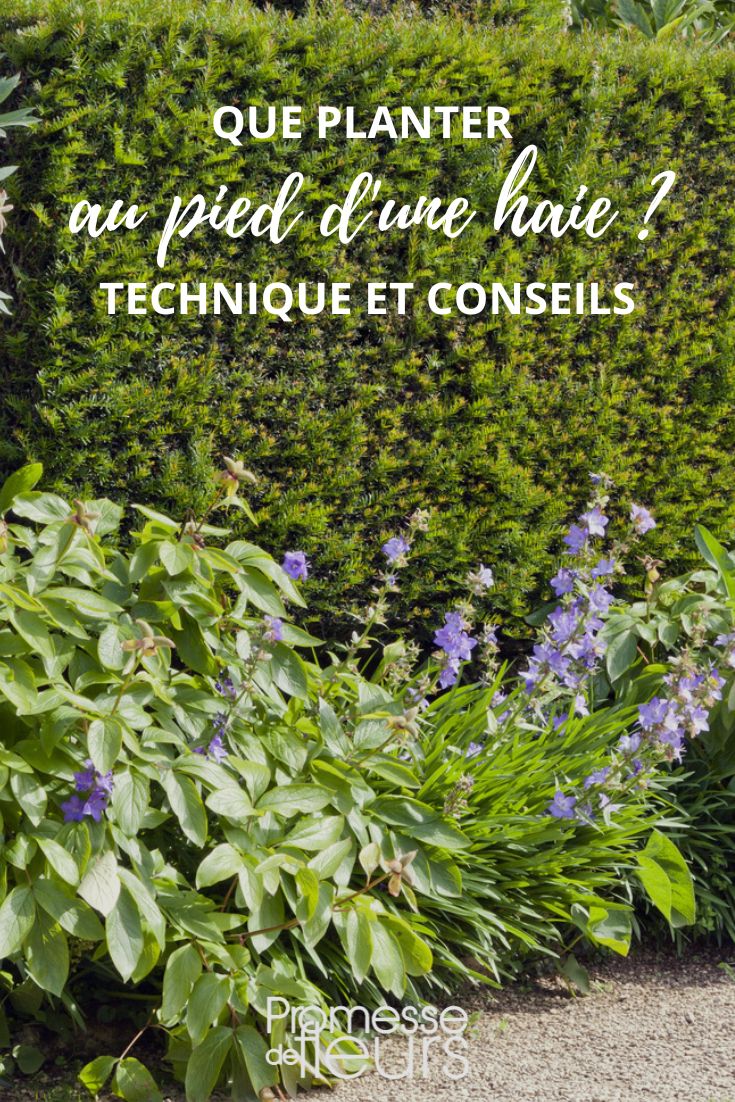Planting at base of a hedge offers an ideal solution to beautify your garden. This practice, both aesthetic and ecological, creates an attractive natural space and welcomes biodiversity. In this tutorial, we will explore reasons why planting at base of a hedge is beneficial, issues involved, how to proceed and finally consider case of Thuja hedges.

Why planting at the base of a hedge?
There are several reasons to plant at base of a hedge:
· Aesthetic : Planting at base of a hedge creates a harmonious, attractive visual effect. By choosing plants carefully, you can achieve an elegant floral composition and a garden that reflects your style and personality.
· Ecological : This planting method supports biodiversity by encouraging presence of insects and birds, while reducing need for water and chemical products.
· Space optimisation : Planting at base of a hedge uses available space efficiently and produces a denser, more structured garden. Real planting beds can be created alongside a hedge, making this area far more attractive.

Issues related to planting at base of a hedge
Key challenges when planting at base of a hedge include:
- lack of light: Plants located at base of hedge can be deprived of light, particularly if hedge is dense and evergreen.
- root competition for nutrients: Hedge roots can consume large share of soil nutrients, which may hinder growth of neighbouring plants.
- watering: Plants at base of a hedge generally need adjusted watering to compensate competition with hedge roots.
When to plant at the base of a hedge?
Best time to plant at base of a hedge depends on type of plants you want to use. In general, autumn and spring are ideal seasons for planting, as temperatures are moderate and rainfall sufficient to promote plant growth.
How to plant at base of a hedge?
Here are essential steps to successfully plant vegetation intended to dress base of a hedge:
· Prepare soil: Remove weeds and debris, then loosen soil to at least 20 cm depth to facilitate plant rooting.

· Choose plants: Select plants suited to situation (shade, partial shade or sun) and soil conditions (dry, moist, acidic or calcareous).

· Dig hole large enough to accommodate plant’s rootball, then place plant in hole and cover with soil. Firm soil lightly around plant and water well to encourage rooting. Leave enough space between plants to avoid competition for resources and ensure good air circulation.
· Apply layer of mulch (bark, wood chips, straw, etc.) around plants to retain moisture, reduce weed growth and enrich soil with organic matter.

Which plants suit planting at base of a hedge?
It is important to choose plants that tolerate not only shade or sun conditions but also root competition from hedges. By combining these resilient plants with other varieties suited to specific conditions in your garden, you can create a harmonious area at base of your hedge. Here are the types of plants best adapted to these particular conditions:
- Among perennial plants, if base of your hedge is in shade or partial shade, choose perennials suited to dry shade such as Epimedium, hardy geraniums, fern Dryopteris erythrosora or Liriope muscari. For sunny spots, opt for periwinkles, alchemillas or sedums.
- The bushes will bring colour, contrast and seasonal interest to your garden while coping with difficult conditions near hedges. They can form full planting beds alongside your hedge. For shade or partial shade, choose Mahonia aquifolium, Lonicera nitida or Sarcococca confusa. For sun or partial shade, prefer barberry (Berberis), shrubby potentilla (Potentilla fruticosa) or ceanothus.
- Among groundcover plants, you will find ivy, periwinkle or groundcover Bugle (Ajuga reptans).
- Spring bulbs (crocus, hyacinths, daffodils...) and autumn bulbs (colchicums, cyclamens) are an excellent option to bring colour and variety to hedge bases. Prefer small-sized bulbs, as they are easier to plant at base of a hedge. For summer flowering, consider Crocosmia, tuberous Begonia or gladioli.
Special case: planting at base of a Thuja hedge
Planting at base of a Thuja hedge can be difficult for several reasons:
- lack of light : Thuja hedges are dense and evergreen, which limits amount of light reaching soil. Plants chosen must therefore tolerate shade or partial shade.
- competition for nutrients : Thujas have an extensive root system that consumes large share of soil nutrients. This competition can hinder growth of neighbouring plants, so enriching soil with compost or well-rotted manure is necessary.
- competition for water : Thujas also absorb a lot of water, which can dry out soil and affect surrounding plants. Important to ensure appropriate watering to compensate for this water shortage.
- toxicity : Some Thuja species may release substances into soil that inhibit growth of other plants. Choose plants tolerant of these conditions and monitor their growth.

Here are some tips to succeed when planting at base of a Thuja hedge:
- Prioritise shade-tolerant plants : Plants at base of a Thuja hedge must be able to cope with low light. Opt for shade or partial-shade perennials such as hostas, ferns or hellebores.
- Thoroughly loosen compacted soil before planting
- Enrich soil : Thujas are known to deplete soil nutrients. It is therefore important to enrich soil with compost or well-rotted manure before planting.
- Monitor watering : Thujas consume a lot of water, which can dry out soil and affect growth of neighbouring plants. Water plants at base of hedge regularly, especially during dry periods.
































Comments